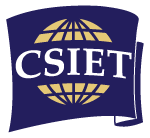Resources: How Programs Operate
How Youth Exchange Programs Operate:
The successful operation of a youth exchange program requires the careful cooperation of many partners. A student is usually recruited by an exchange organization that is based in his or her home country. A partner exchange program in the destination country sponsors the student, with their local coordinators identifying a host family and, in the case of a semester or year exchange, a school willing to host the student.
Student Recruitment:
The process begins with the recruitment of students. In the case of exchanges bringing students to the United States, the American organization enters into a contractual agreement with an overseas partner to recruit international students. Some organizations have related or affiliated organizations abroad while other organizations work with an independent partner. Depending on the specific country, promotional brochures are usually produced well in advance of the exchange period and are distributed to high school teachers, students referred by previous student participants, and the general public. Some countries may have a large number of organizations advertising and recruiting for exchange programs so prospective students have many options. Many students apply to more than one program and make their decision based on references, prices, and subjective factors.
Program Pricing:
Pricing for exchange programs includes fees assessed by the two partnering exchange programs and varies depending on what is included and on market factors in each country. Fees cover program services, such as the recruitment, screening, and orientation of students; support to the student’s natural parents and host parents during the program; assistance in obtaining the proper visa; monitoring and counseling the student during the program; and overhead costs of operating the program. Prices may also include international transportation, transportation within the destination country, and health insurance.
Screening Participating Students:
One of the most important functions performed by the home country organization is the screening of students. Using guidelines provided by the destination country partner, the organization begins the student assessment and screening process. A personal interview with each student assesses the motivation and expectations for the exchange. At least a portion of this session is conducted in the language of the destination country as a preliminary assessment of the student’s language ability. Most organizations also interview the natural parents as to why they want their child to participate. The program may then ask the student to complete a comprehensive application which includes school transcripts, teacher references, medical history, student and parent letters as well as answering program specific questions. Many programs will require a language proficiency test.
Another program component handled by the home country partner is assisting the student with the process of obtaining the proper visa documents. In the case of exchange students coming to the United States for a semester or year, the U.S. organization most often issues the accepted student a DS 2019 form to present to a U.S. embassy along with a valid passport, photos, and a visa fee in order to obtain a J-1 exchange visitor visa valid for the duration of the program.
Student Admissions:
Although the student assessment process begins overseas, the final decision of student acceptance rests with the exchange organization in the United States. Each organization carefully reviews students’ complete applications to determine if the students’ qualifications meet the standards required. Applications are also assessed for qualities that result in a successful exchange.
Once a student is accepted, the process of finding suitable host families and schools begins. Student applications are sent to field staff who search for a host family and school to host the student.
The organization in the destination country usually charges the recruiting partner a flat fee for their part of the program. These fees are used to operate the program in the destination country. The most important component of every exchange program is the group of committed people who work for it. They range from managerial and operational staff at the program’s headquarters to the regional and local coordinators who work in the field finding host families, coordinating with high schools for student enrollment, and supporting students through the difficult and complex process of cultural adjustment.
Families who agree to host exchange students will be active partners. They provide housing, meals, and transportation for exchange students, but in reality they do so much more. Host parents are the surrogate parents for an exchange student with all of the rewards and challenges of parenting. The destination country partner organization provides host families with orientation and resources to prepare them for this experience, stressing that the essential quality of a successful host family is patience. Exchange students need time and understanding to help them adjust to a completely different way of life, far from the comfortable familiarity of home. Both students and host families have the support of the local coordinator and operational staff in making these adjustments. However, the student and the host family do the most important work on a day-to-day basis.
The school component of an exchange rounds out the program, giving exchange students exposure to the American educational system and its role in the life of American teenagers. While exchange students generally are academically equipped to succeed in an American high school, an adjustment period is usually necessary for even the most successful students. The high school environment in other countries is often more formal with few of the extracurricular activities so common to most American high schools. Additionally, even students with excellent English skills can require a few weeks to become comfortable communicating in a second language. Participating high schools should rely on the expertise of program personnel to deal with any adjustment problems. Communication is essential during this period so that misunderstandings or special needs may be addressed before they become serious.
